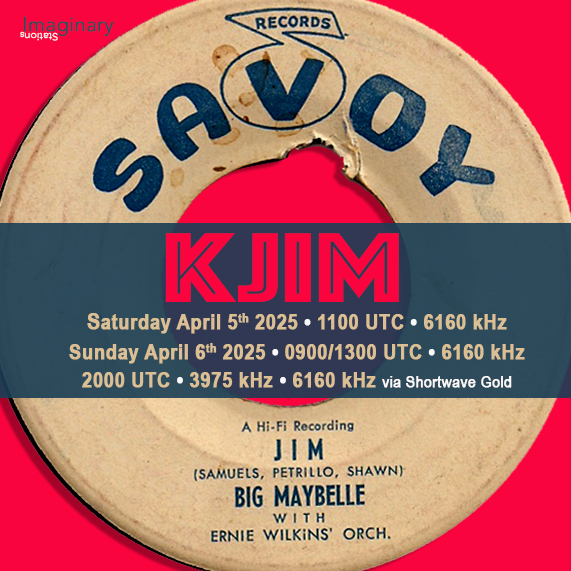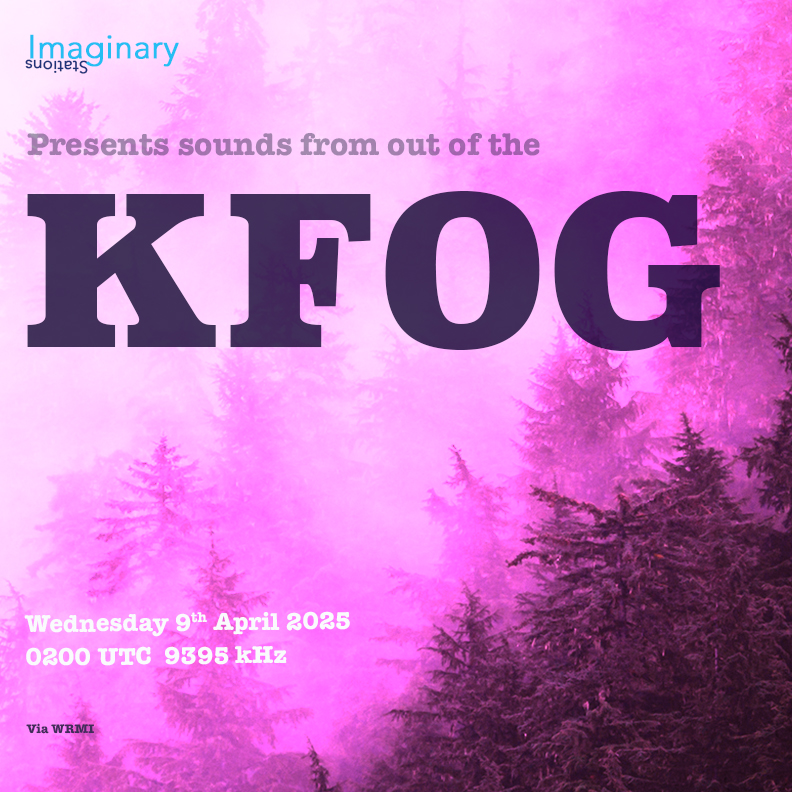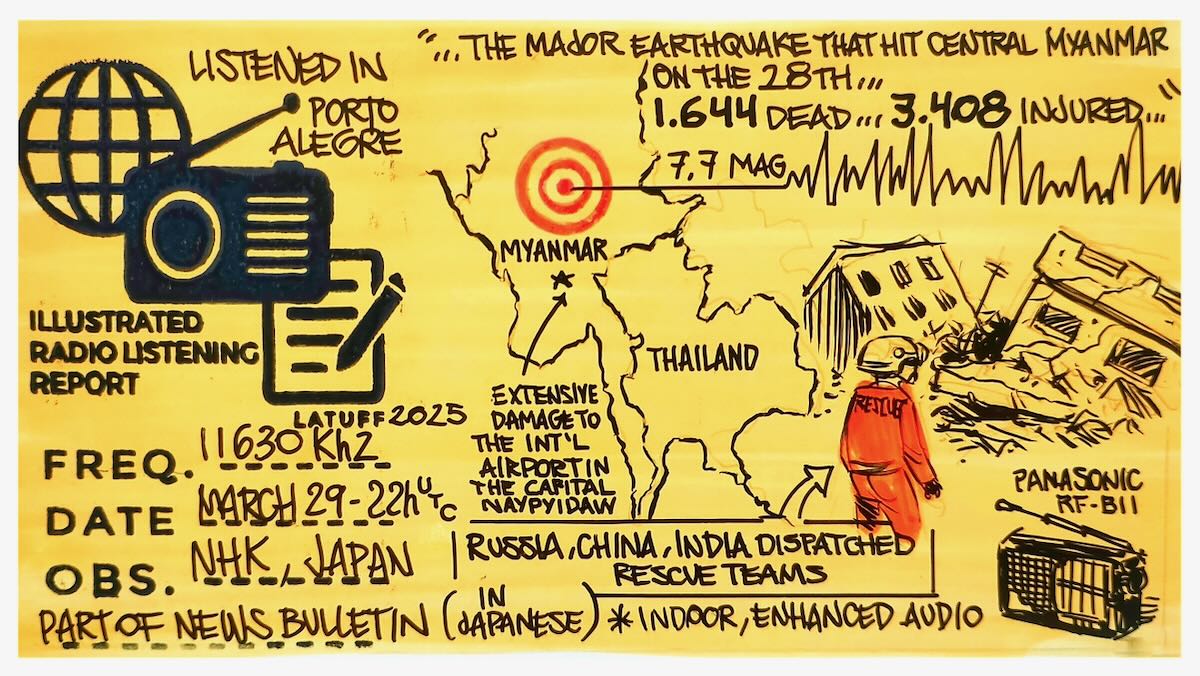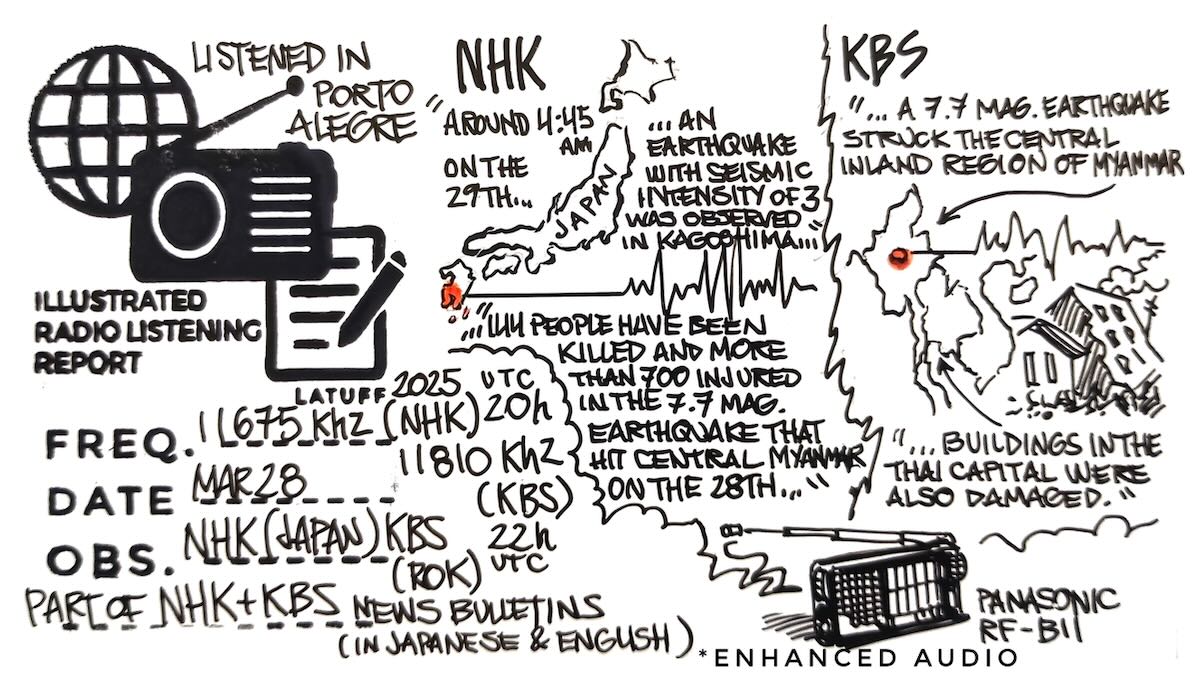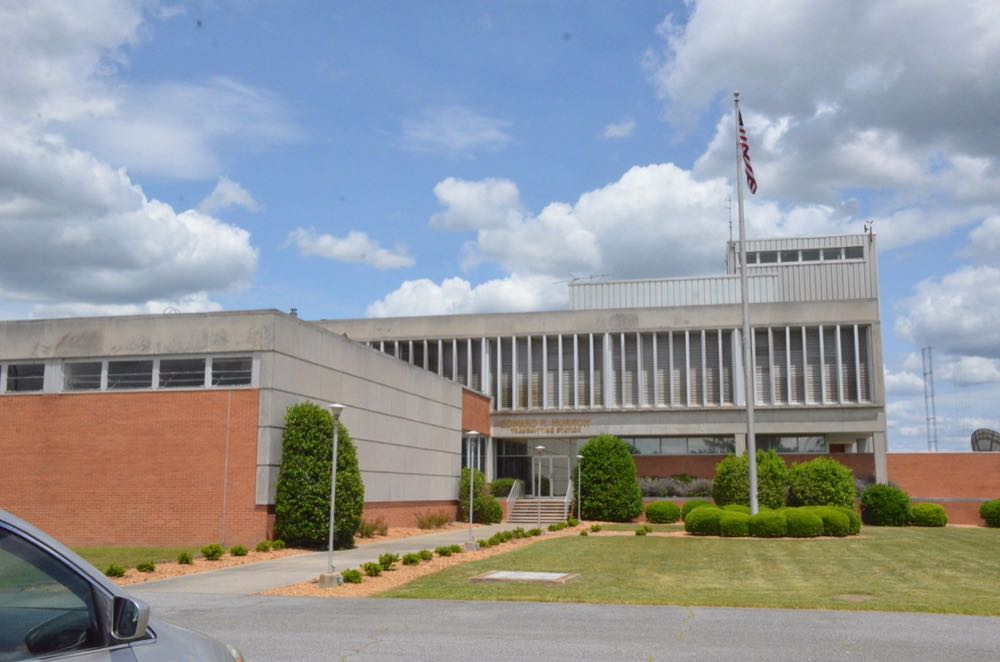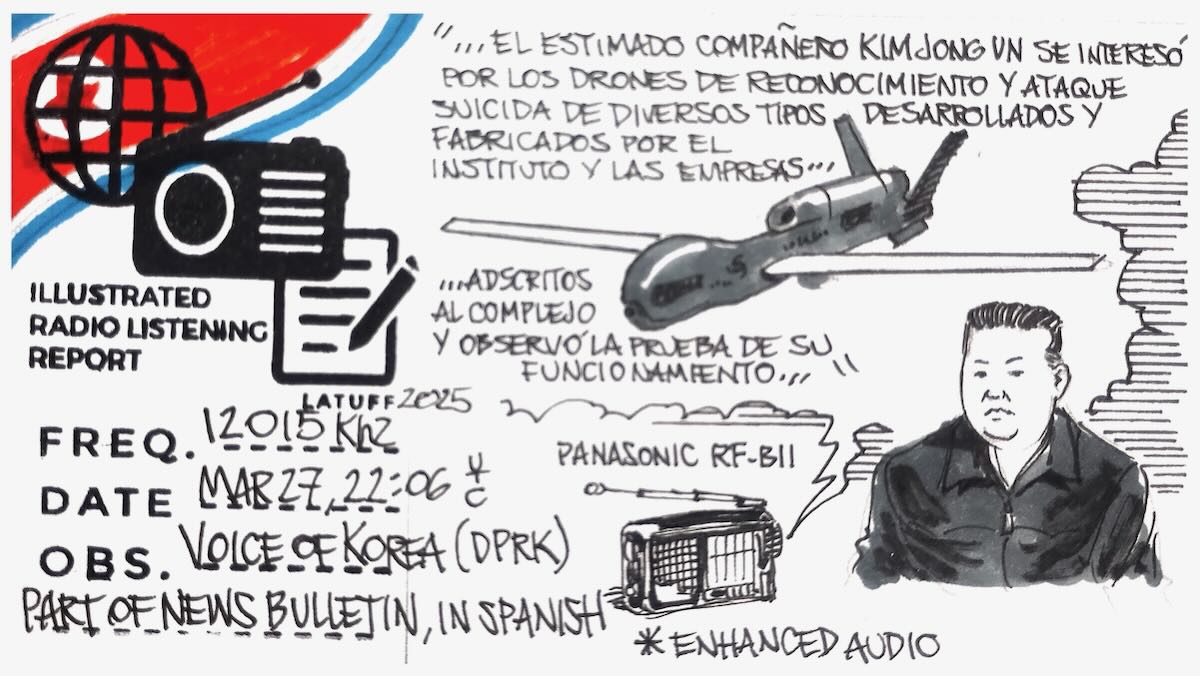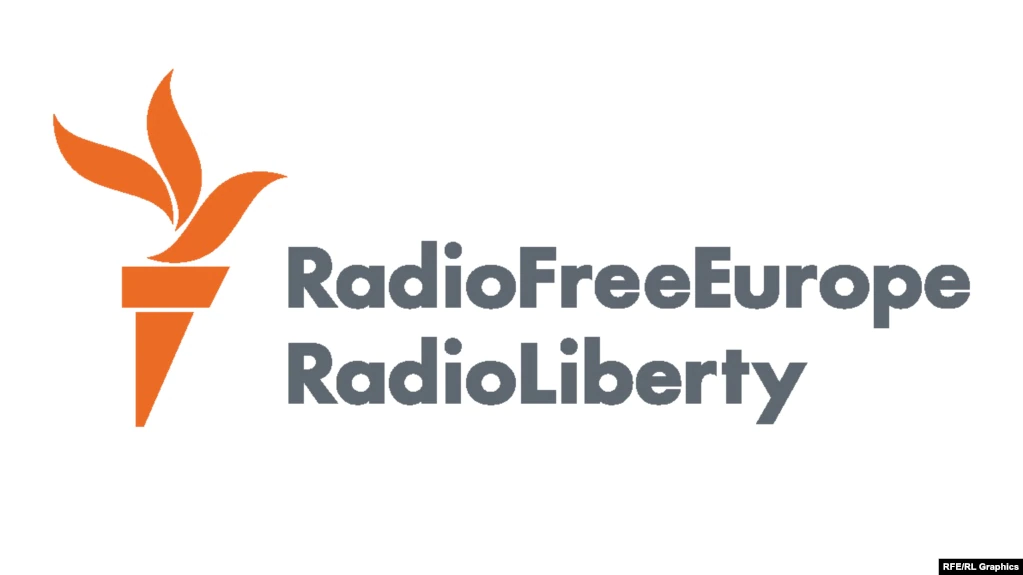A big hello to all the SWLing community everywhere. Imaginary Stations have a couple of interesting programmes going out over the airwaves this week. The first is on Saturday 5th April 2025 at 1100 hrs UTC on 6160 kHz and also on Sunday 6th April 2025 at 0900/1300 hrs UTC on 6160 kHz and at 2000 UTC on 3975 kHz and 6160 kHz. It’s called KJIM and it’s a programme dedicated to all people called James, Jamie, Jimi, Jimmie, Jimmy, Jimbo and Jacob. Tune in at the alloted time and enjoy the Jim inspired show.
On Wednesday 9th April 2025 at our new time of 0200 UTC via WRMI we bring you KFOG. We’re talking about a radio programme from out of the mist and from the depths of the sea. Tune in and enjoy the misty type vibes.
For more information on all our shows, please write to [email protected] and check out our old shows at our Mixcloud page here.
FastRadioBurst 23

